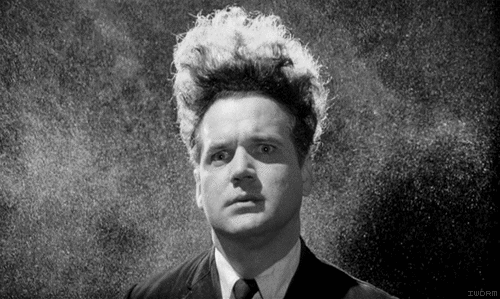The benefits of group dreamwork are often nebulous and difficult to describe to those who are not familiar with investigating their own dreams. Really, more zest and verve in your life, you say? Can you quantify that?
Actually, yes we can.
A European research team has just published a groundbreaking study on the cognitive, emotional and creative benefits of REM (dreaming) sleep, in the empirical journal Frontiers in Psychology.
What makes this study so compelling is that these positive effects came not just from recalling dreams but after working with these dreams in a group dream circle.
Josie Malinowski, PhD, a contributing author of the study from the University of Bedfordshire, UK, aptly told me that, “The study is an exciting step in the right direction towards marrying dream work with dream research. As well as this, it offers the tantalising possibility that dreams may contain material that is the source of cognitive and/or personal insight gained during wakefulness.”
Hold on… marrying dream work with dream research?

I’m totally geeking out.
The Case for Dream Meaning
The research behind the inherent meaningfulness of dreams has been building steadily now for a generation or two. Check out my article on the cognitive theory of dreams for a quick review as well as this piece on the neurological structures considered by many to be behind the inherent meaning of dreaming.
Also, there’s quite a bit of research supporting the creative and problem-solving power of dreams. Besides the hundreds of accounts of scientists, artists and inventors claiming they received specific insight due to remembering a dream, we also have a lot of psychoanalytic evidence (from many schools of psychology) that suggest that clients receive startling insight into their lives and conflicts through dream sharing with a professional.
This study builds upon this heritage, specifically testing the practice of group dream sharing with fellow non-professionals (the Ullman method) for increases in personal life insight.
But are dreams especially good at making insights?
Still, this study can’t determine whether it was the dreams themselves or working with the dreams that created the effect. After all, it could very well be that most of the cognitive benefit of dreaming occurs without us working with the dreams — or even remembering them. (Although that is awfully hard to test).
Conversely, it could be that working with any material in a group setting (not just dreams) could encourage this level of insight.
In this vein, Mark Blagrove, PhD, from University of Swansea, UK, another contributing author of the study, told me that, “what is now needed is to compare gains from participation in an Ullman dream group with gains from a group examining a text that isn’t a dream, such as a report of a recent episode in one’s life. A panel at the IASD Berkeley (CA) conference in June will be addressing this.”
Okay, so there’s still some wibbily-wobbily here, but the team is on the case.
What is the Ullman Method?

The group dreamwork method studied is the “Dream Appreciation” method designed by Montague Ullman, a famed dream psychologist who passed away in 2008.
The method has four distinct stages in which the group plays with different thought experiments, focusing on one shared dream at a time.
Unlike more clinical approaches, this method of dreamwork is considered to be “dreamer led”: the dreamer retains control of the process and always has the last word. Ullman’s work is in fact one of the cornerstones of the contemporary dreamwork movement which places a high value on grassroots dream sharing.
Group Dream Work Compares to Clinical Methods
Mark Blagrove and team hypothesized that using the Ullman method would result in comparably high levels of insight as with a well-established clinical method known as the Hill method.
The results supported this chief hypothesis, and were congruent with past studies, suggesting that, in their words, “exploring dream content and linking that content to the dreamer’s waking life can help in the achievement of insights and self-understanding.”1
Josie Malinowski reiterates that the measured insight occurred in the absence of a trained therapist. “This has not been attempted before,” she continues, “and the findings indicate that the Ullman method as used here generated very high levels of personal insight.”
Remarkably, this insight effect occurs even though, Mark Blagrove stressed to me, only “a small amount of each dream can be related to waking life experiences, even when the dream is examined for over an hour.”
How small?
Something like 14% of the dream content was found to be related to waking life events by independent judges.
Different Kinds of Insight from Dream Work
The point here is that correlating a dream with waking life events is not the only kind of insight, nor is this kind of insight necessarily related to broader creative or therapeutic insights, such as, “Aha, this tells me about myself.”2
The authors point out that this distinction is also made by researcher Teresa DeCicco, guided by her separate questions “Does the dream have meaning for you?” and “Do you have any clear insight about your life from this dream?”3
From a practical standpoint of participating in dream groups, it may be useful to mind these two questions as separate processes (even though they may also come together too).
I am still totally geeking out about what this study has done: built the first empirical bridges of my two loves, dream research and personal dream work.
This is bold stuff, but only the beginning.
In closing, I asked Josie Malinowski what is next for her in regards to this research thread. She replied, “I would be interested to find out whether insight (and attitude) are related to other trait aspects of dreaming, such as dreaming in metaphors, having bizarre dreams, and/or hyper-associative dreaming.”
Notes
1. Edwards CL, Ruby PM, Malinowski JE, Bennett PD and Blagrove MT (2013). Dreaming and insight. Frontiers in Psychology, 4:979, (provisionally p. 31 of essay).
2. p. 32
3. DeCicco, T. What is the story telling? Examining Discovery with the Storytelling Method (TSM) and testing with a control group. Dreaming 17, 227-238.
Featured image CC: Dream by Thomas Beauchamp-Arnold
Ryan, as always, I enjoy reading your insights immensely and I’m happy for your geek side that this fascinating research is further “legitimizing” dreamwork, though I know your dreamer side doesn’t need proof beyond your own experience which your share in your excellent work. What I scratch my head at in quantitative studies is that if you ask the vast majority of people who’ve lost touch with their dreaming because, around the world, most civilized countries undervalue dreaming, then the answers you get are based on people alienated from their dream life. If you ask frequent and conscious dreamers how many animals they have in their dreams, well, just based on my own experience, the numbers would be rather more significant for my age category. It bothers me that giving so much credence to these quantitative categories and typing sets up conscious or unconscious expectations that might limit a person’s dream experience, unnecessarily. However, it is fascinating stuff, and you’ve sent me all over the internet with your wonderful links. I’ve admired Ullman’s work since I started playing with dreamwork more than 30 years ago; his contribution is pretty obvious in the method I teach and practice now, Robert Moss’s Active Dreaming. Oh, and I love the “hair on fire” visual, very funny.
thanks for the comment Adelita! You’re right, I don’t personally need this confirming research BUT I respect the work of the dream research community because it is these studies that are paving the way to a more inclusive medical system and health care ecosystem that respects the power of intuition, visions, and dreamwork. BTW Robert Moss’s methods are great — and very easy to learn; I recommend them as well.
Yes, the research legitimizes all, and it is wonderful, especially when done by researches who actually use their own dreaming, like Ullman or LaBerge. Dream wisdom is ancient, though. Indigenous customs have so much to teach and are learned differently than Western knowledge. However we pursue it though, part of the revolution in consciousness that so many teachers are talking about, a big part, is a return to the practice of paying attention to dreams. I’ve benefited greatly by your work, especially in the area of lucid dreaming, sleep paralysis, etc., but your blog is great, and when I can, I enjoy reading it.
I wish I had something wise and profound to add, but I really don’t. Can I just say thanks for the post and especially all the links? They’re going to keep me happily busy for quite some time.
I’m also enjoying Robert Moss. I find his ideas of ‘normal’ for dreamers especially interesting: predictive dreams, out of body experiences, conversations with ancestors, all perfectly ordinary.
This recall to my mind a story that Mohammad used this group dreaming therapy through sharing the dreams of others and discuss it in the group to find its message and to find its flash for the dreamer himself and the group. The story as I heard it says that Mohammad early during the first prayer ask his followers who has a dream, let us hear it and start the discussion.Dream is one of the basic human perceptional faculty The story of Joseph in indicative in that context.
thank you for this detail! Is this tale of dreamwork in the Quran or other writings?